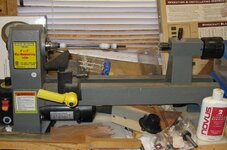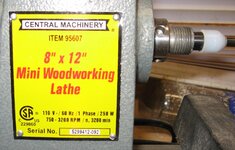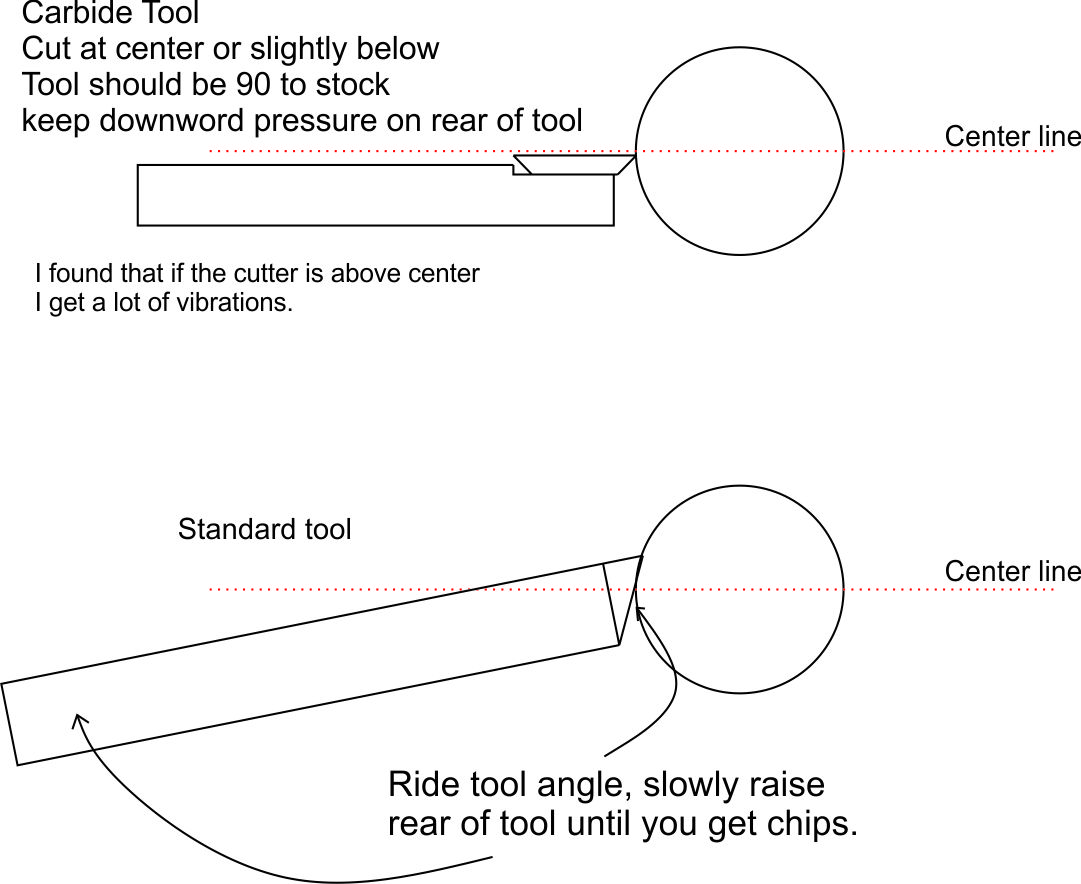artmakersworlds
Member
My daughter JUST bought me a new lathe yesterday. Got it at harborfreight, a discontinued "out of box" model called
central machinery 8 x 12 mini woodworking lathe.
Here's a picture I plucked off the web.
https://images-na.ssl-images-amazon.com/images/I/71zL5RqPKqL._SL1200_.jpg
Now… can't beat the price. Just over 30.00. But I quickly found out it's missing some parts.
Comes with the big 8" wheel as pictured here, but it's also suppose to come with a smaller one. I don't have that. Now I might not even need it for pen turning would I?????
It also was suppose to come with a flat wrench to tighten that wheel with. NO wrench I own will fit. A youtube video I found also showed some long rods with nice handles. (I used a screw driver to insert in one of the holes to hold the nut thing so you can tighten up the disk. but since we don't really have a tool to tighten it well, not even going to try to use that.
If anyone knows where I might pick up these parts please let me know.
My guess is I need a mandrel kit which a few turning sites have.
Here is one… anyone have thoughts? Right size? Not?
https://www.pennstateind.com/store/PKM-ELC.html
I'm probably going to start out with cured polymer clay over a slimline barrel. So for now no glues, or finishes needed. (They come out just dandy with a whole lot of sanding.) At some point I will try wood or acrylic, but polyclay I know. Turning will open up a whole new range of possibilities.
central machinery 8 x 12 mini woodworking lathe.
Here's a picture I plucked off the web.
https://images-na.ssl-images-amazon.com/images/I/71zL5RqPKqL._SL1200_.jpg
Now… can't beat the price. Just over 30.00. But I quickly found out it's missing some parts.
Comes with the big 8" wheel as pictured here, but it's also suppose to come with a smaller one. I don't have that. Now I might not even need it for pen turning would I?????
It also was suppose to come with a flat wrench to tighten that wheel with. NO wrench I own will fit. A youtube video I found also showed some long rods with nice handles. (I used a screw driver to insert in one of the holes to hold the nut thing so you can tighten up the disk. but since we don't really have a tool to tighten it well, not even going to try to use that.
If anyone knows where I might pick up these parts please let me know.
My guess is I need a mandrel kit which a few turning sites have.
Here is one… anyone have thoughts? Right size? Not?
https://www.pennstateind.com/store/PKM-ELC.html
I'm probably going to start out with cured polymer clay over a slimline barrel. So for now no glues, or finishes needed. (They come out just dandy with a whole lot of sanding.) At some point I will try wood or acrylic, but polyclay I know. Turning will open up a whole new range of possibilities.



